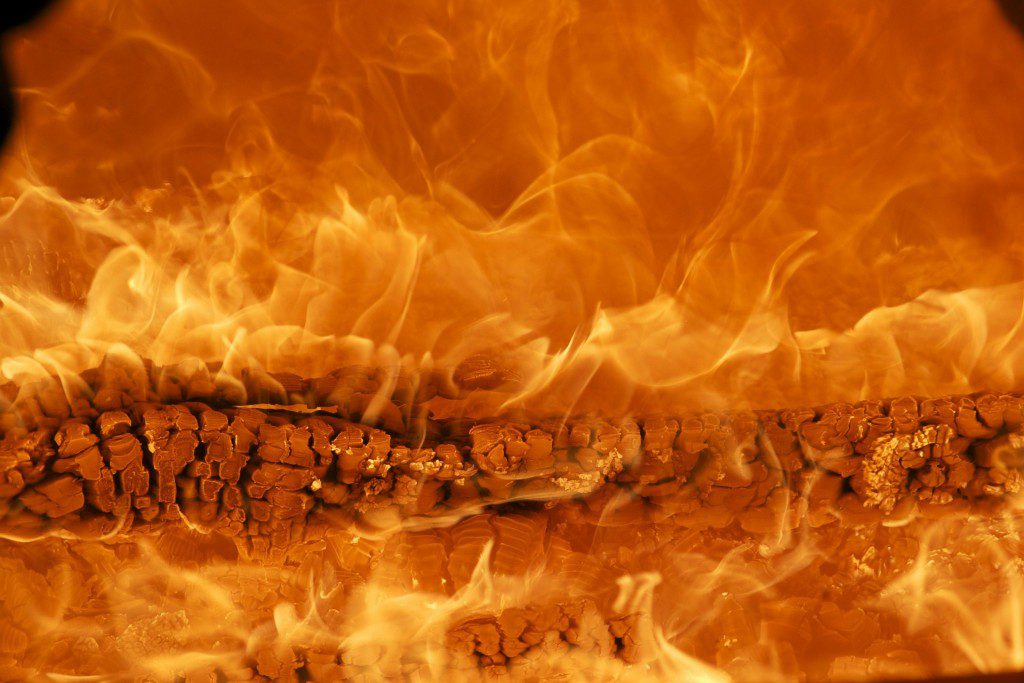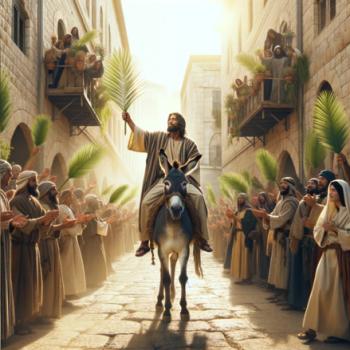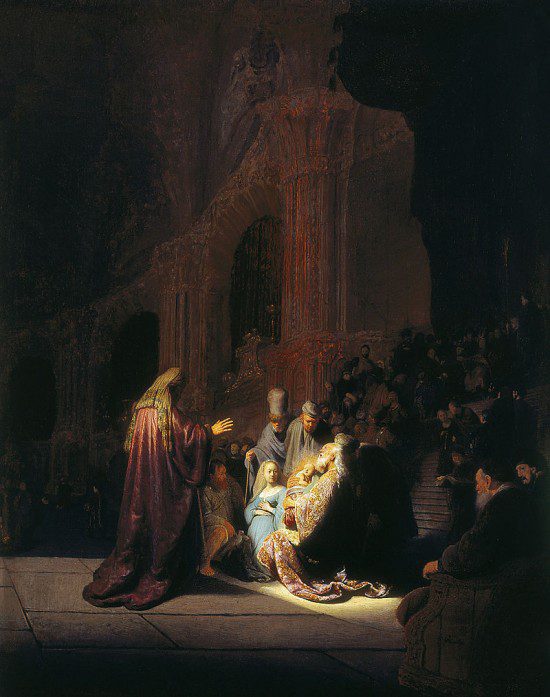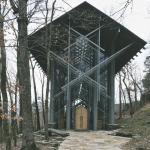Some of the stories from the Desert Fathers and Mothers are just too weird to mean much to me. Or they’re too hard. Or they’re just too hot and windy and covered in sand. But sometimes – and timing is everything in the spiritual life – one hits me hard. And this is the one I’m thinking of lately:
Abba Lot came to Abba Joseph and said, “Father, according as I am able, I keep my little rule, I fast a little, I pray and meditate, I live in peace, and, as far as I can, I purify my thoughts. What else can I do?”
The elder rose up in reply and stretched out his hands to heaven. His fingers became like ten lamps of fire, and he said, “If you will, you can become all flame.”
That question stops me: “What else can I do?” In a very full life, it’s not a question we like to ask. More likely we ask: “Am I doing enough?” But in truth, the question is: what else can I become?
Is the trajectory of faith in my life still arcing, or has it reached a comfortable and sustainable plateau? Could I really become all flame?
I’m not sure this is necessarily the kind of thing we can measure accurately from the outside looking in. It’s more an inside looking out kind of thing. Early Christians recognized that waiting on tables, done right, required the fullness of the Spirit and wisdom (Acts 6.1-6). This helps us in our expectations. A life burning with the Holy Spirit does not inevitably look like a torch, or sound like dramatic whirly-wind languages. It might look like ladling soup or wiping down counters.
Abbot Joseph’s finger-fire reminds me of the Holy Spirit falling like fire on the disciples at Pentecost. Those sparks blasted Jesus’ resurrection to the furthest points of the globe. We’re still feeling the shock waves of that falling fire. So I look more closely at this cosmic event that makes every believer into a temple in which God lives (1 Cor. 6.19). What should that look like today?
Acts 2 begins and ends with the community. “All together.” “All of them.” That’s how it starts. Then, at the close, “Every day they continued to meet together in the temple courts.” We are called one by one, saved one by one, and filled one by one. One writer calls this the “irreducible particularity” of the spiritual life. Unique, distinctive, irreplaceable. But then, each of us, like a small colored tile, is fit into a splendid and super-intricate mosaic of great beauty, a mosaic that must have the color and shape and size that we bring.
The adorable truth about the anointing of the Spirit is that it is Love in two dimensions. The Spirit’s filling is for me; the Spirit’s filling of me is for you.
Scripture teaches us that this is the pattern of God’s love. Whenever I read through Exodus and get to Bezalel, son of Uri, I smile. Bezalel was chosen and Spirit-filled so that he could make beautiful things. What a great calling, and if you’ve ever known an artist, the pleasure he or she gets in creating is rich and deep. That pleasure is all theirs, a feast of sorts. And yet, it’s for our delight. God wants jewelers and designers and potters and landscape artists and even people who can make really cool photo albums with the cute labels and scalloped framing. (Small sigh of incompetence.)
Or think of Elizabeth, barren and humiliated. But then, past the point of hope, pregnant!! What does she say? “The Lord has done this for me.” And he did. God did this for her. This baby John was for her, to take away her disgrace, an expression of God’s love for her. But John the Baptist was given for the community—a prophet, one who prepared the way of the Lord. Our babies are for us and fill our hearts with joy, yet we raise them to give them to the work of God in the world.
For me? For you? Yes. Never just for me—the Spirit’s filling isn’t a private experience that we get to horde for our own spiritual gratification. Never just for the community—the Spirit’s filling is not a function for the sheer good of the collective. It is Love in two dimensions.
The filling of the Spirit is for mission. When Jesus promises the Spirit, he tells the disciples that they “will receive power when the Holy Spirit comes on them; and they will be my witnesses” (Acts 1.8) The point of being filled is mission. I’m not talking about missionaries, or the mission field, full time Christian ministry, ordination, senior pastors or associate pastors or children’s pastors or women’s pastors or youth pastors. I’m thinking of Bezalel again, Bezalel and all those who are “touched” in the Old Testament with the Spirit. They are artists, architects, leaders, musicians, poets, teachers, prophets, politicians, lawyers, bureaucrats, shepherds. And then, of course, Mary—touched by God for the mission of motherhood. The Spirit commissions them, each and every one, so that they, like the fire-baptized disciples, can “declare the wonders of God.” What do you do that is a declaration of the majestic acts of God? That, at least in part, is your mission, your expression of Spirit.
The promise is renewed through repentance. Peter preaches the First Sermon of the Church, and the response goes from, “What does this mean?” (v. 12) to “What shall we do?” (v. 37). And Peter’s reply is, “Repent and be baptized, every one of you, in the name of Jesus Christ for the forgiveness of your sins. And you will receive the gift of the Holy Spirit. The promise is for you and your children and for all who are far off—for all whom the Lord our God will call.”
That would be you and me.
Just a couple of comments here about repentance. This has very little to do with feeling sorry for your sins. Feeling sorry is a good thing, and you’ll probably feel that. Or maybe not. But repentance is more than mere remorse.
We usually relegate repentance to 1) our conversion; 2) occasions of sin that need addressing; or 3) seasons, like Lent or your church revival. Repentance, however, is not fundamentally any of that. It is the essential posture of returning to the Lord.
If repentance means “to turn around,” as the Greek word indicates, we can either focus on what we’re turning from (bad stuff) or what we’re turning toward: God. It is a complete and ceaseless reorientation of our lives. John Climacus of the 7th century calls it “the great turning round of the mind and heart, and of our whole grasp of reality.” It is an active posture in which we face God, acknowledge who he is, and accept his judgment of who we are. And we tremble, but not from fear; we tremble in the terrible sight of his love that bids us come near and seek his face. We say to him and he says to us, “This is who you are; this is who I am.”
That is reality, it is relationship, it is righteousness; and it needs to happen not merely at the onset of our faith lives, or during Lent, or when we’ve sinned. Repentance, like a subterranean current in our souls, murmurs without ceasing as we seek God’s face.
And so I keep my little rule, say my little prayers, and try to be a real Christian, all the while praying for a greater filling of the Holy Spirit so that I may become all flame.
Suggestion for practice: Repent early and repent often, morning, noon, and night. And in the grocery store line. And while doing the dishes. And when you fill up your car with gas. And driving car pool. And sorting through the bills. And… well, always, without ceasing. Repent and return to the Lord. One way I do this in the mornings is to pray-sing this 15th-century hymn,
Come down, O Love Divine, seek thou this soul of mine, And visit it with thine own ardor glowing. O Comforter, draw near, within in this heart appear, And kindle it, thy holy flame bestowing. And let it ever burn, till earthly passions turn, To dust and ashes in its heat consuming. And let thy glorious light, shine ever on my sight, And clothe it round the while my path illuming. So shall the yearning strong, with which the soul shall long Shall far outpass the power of human telling. For none can guess its grace, till Love create a place Wherein the Holy Spirit makes a dwelling.
Listen to it performed by Fernando Ortega here.
Image via Pixabay.

















